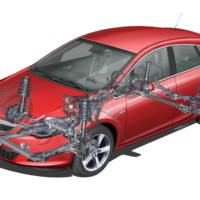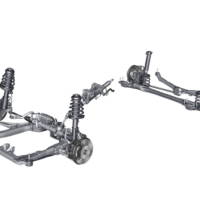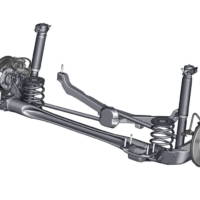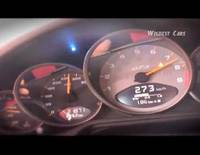Detailed information with the new Opel Astra chassis has been released today by the German car maker. With the front and rear tracks increased by 56 mm and 70 mm the Opel Astra chassis is set to offer a new level of stability and handling as well as increased passenger space inside the cabin for the company’s new generation hatchback.
The Opel Astra chassis features the FlexRide adaptive damping system first seen on the Insignia model with the Standard, Sport and Tour settings, that automatically adjusts the suspension improving cornering speed.
The Opel Astra has a MacPherson front suspension and a newly developed crank rear axle with a Watts link and thanks to this architecture exterior noise and vibrations are reduced improving passenger comfort as well as the vehicle’s handling capabilities.
More specific details with the new Opel Astra chassis in the official press release below.
Opel press release :
For the next generation Opel Astra, engineers designed a new chassis layout with a long wheelbase and wide track to give drivers improved agility, stability and comfort.
Driving dynamics on the new Astra are improved by wider front and rear tracks, increased by 56 mm and 70 mm respectively, in addition to the increased wheelbase of 71 mm longer. The proportionately greater increase in track gives the car a wide footprint, improving stability and handling while allowing ample passenger space inside the cabin and a muscular appearance on the outside.
The FlexRide adaptive damping system first seen on the Insignia now debuts in the compact class when the new Opel Astra five-door hatchback premieres September 17 at the IAA Frankfurt Auto Show. The FlexRide system adjusts the suspension character automatically to suit the drivers’ needs.
Keeping the advantages of size, weight and overall efficiency of the compound crank rear axle layout design, Opel engineers added a cleverly positioned Watts link, which supports lateral forces while cornering on the suspension. It also makes the car dynamic and agile without compromising on stability and comfort.
Finally, a core body structure stiffer than that of its predecessor provides a firm base for optimizing the new Astra’s handling and ride capabilities. In addition, this helps reduce noise and vibration inside the cabin.
First seen in Insignia, Opel brings FlexRide to the compact class
Opel was the first automobile manufacturer to bring an advanced adaptive damping system to the compact class with the current Astra. Now, first seen in the Insignia and a rarity in this sector, FlexRide offers the driver three settings – Standard, Sport and Tour – while being fully and continually adaptive to changes in driving style and cornering speed.
All four dampers are electronically controlled and continuously adapt within milliseconds to the prevailing road conditions, vehicle movements and individual driving style. This gives the driver enhanced vehicle stability and greater driving safety. As a further refinement, Opel FlexRide also enables drivers to select settings that match their own driving needs or requirements for a particular journey.
The Standard mode of the Opel FlexRide continuously adjusts to all driving situations. In addition, the driver can shift the range of adaption by selecting a generally relaxed Tour mode or a more dynamic Sport mode by pressing the relevant button in the center stack. Deactivating the Sport or Tour mode returns the ride setting to the Standard mode.
The Tour mode relaxes the damping settings for a more comfortable ride and also reduces steering effort, which heightens ease of control. This helps to reduce driver stress and fatigue on long journeys.
The Sport mode offers a more connected driving experience: the dampers stiffen up; the steering sharpens and the electronic throttle offers a swifter pedal response. To underline the effect, the instrument panel illumination changes from white to red. If fitted, the Adaptive Forward Lighting system (AFL+) reacts even more quickly. With automatic transmission, the up-shift points are also raised to a higher engine speed.
As a further refinement, Sport mode includes a customization menu, accessible via the radio or navigation display, where the driver is able to de-select the Sport setting for the dampers or steering assistance.
The electronic brain behind FlexRide is the Driving Mode Control (DMC) module. Using vehicle dynamics information, the DMC constantly monitors driving style and conditions, including acceleration, braking and cornering, to optimize the chassis’s behavior.
Apart from a more rewarding driving experience, the intelligent Opel FlexRide systems offer safety benefits in emergency situations. For an avoidance maneuver in Tour mode, various chassis sensors convey this to the DMC and the dampers are stiffened within a millisecond to provide maximum stability.
Clever rear axle layout combines a compound crank with Watts link
The new suspension layout combines a MacPherson front suspension similar to the Insignia and a clever, newly developed compound crank rear axle with a Watts link. This new layout reduces unwanted noise and vibrations, allowing a comfortable ride and improving the vehicle’s handling capabilities.
The new Astra rear suspension lay-out retains all the advantages of the compound crank over a multi-link axle. These include packaging and mass benefits, greater wheel camber stiffness, less camber loss due to body roll during cornering and lower suspension friction. The addition of the Watts link enhances lateral stability.
The torsion beam of the compound crank axle is attached between the trailing links about half way between the axle bush and the rear wheel. The open, U-shaped profile between the attachment points has now been lengthened and the wall thickness generally increased to provide more roll stiffness. In addition, beams with different wall thicknesses are fitted to give the required roll steer characteristics.
The Watts link is carried on a small cross-member attached to the underbody, just behind the rear wheel center line. It consists of a short, pivoting center link with a ball joints at each end, to which the lateral links from the wheels are bolted.
While traveling straight, the kinematics of this linkage guarantees an undisturbed jounce motion. During cornering, however, it minimizes lateral deflection in the same way a modern Multi Link Suspension would do. An additional advantage of the Watts link is that it reduces axle bush loads to allow softer bushings to greatly improve road noise and isolation.
The front suspension MacPherson struts incorporates dual path top mounts separating spring and damper forces. To reduce unsprung weight and assist weight distribution, the knuckle and the lower control arm are aluminum and the anti-roll bar is made of hollow section steel.
The L-shaped control arm is attached through two bushings to the front sub-frame. The front bush is very stiff with optimized hysteresis for handling, while the rear bushing is a radial loaded hydro-bush. The suspension geometry and the tuning of the bushings are designed to provide both lateral stiffness and longitudinal compliance for excellent handling and good ride comfort. The rear most bushing of the L-arm is also hydraulically damped for excellent road isolation, helping to prevent vibrations being transmitted into the vehicle structure.
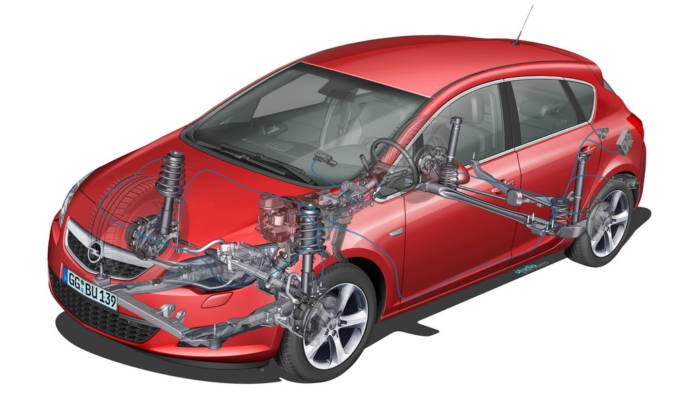
13 Jul 2009
0

